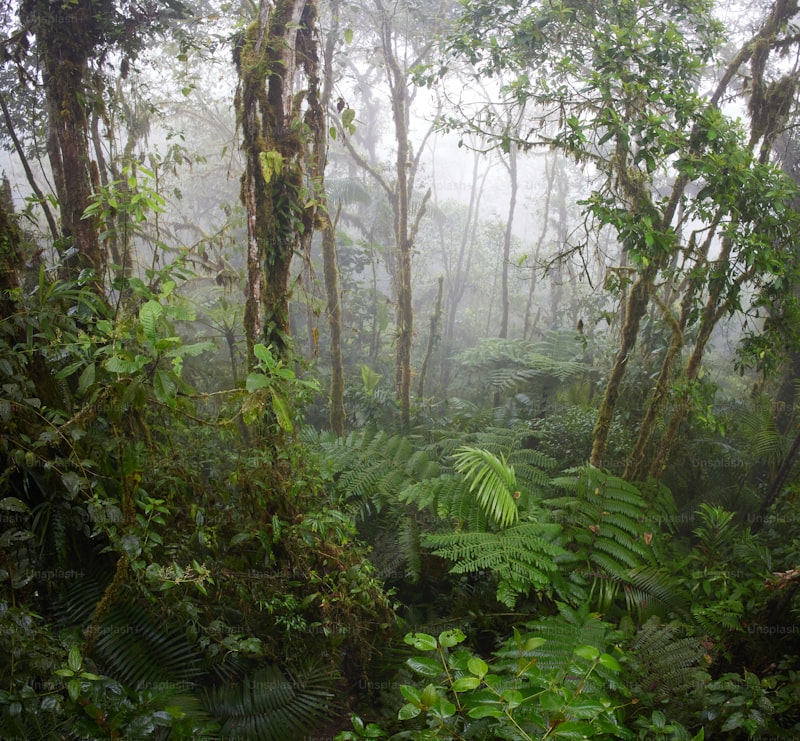
In the heart of every forest lies a tapestry of genetic diversity. Trees and plants adapt to their surroundings through genetic variations that have evolved over centuries. These adaptations aren’t just random mutations; they’re finely tuned responses to environmental cues like soil composition, temperature, and rainfall patterns. Picture it as a survival strategy written in the genetic code of each organism, ensuring their species can thrive in their specific forest niche.
Take the mighty redwoods of California, for example. These towering giants have developed genetic traits that allow them to withstand both the dry summers and the damp winters of the Pacific coast. Their genetic makeup includes mechanisms for efficient water usage and resistance to pests, making them resilient to the challenges of their habitat.
Ecological geneticists study how these genetic adaptations occur and what impact they have on forest ecosystems. By examining the genetic diversity within a forest, scientists can uncover which species are more vulnerable to environmental changes and which ones are resilient. This knowledge becomes crucial in conservation efforts, helping experts identify species that might need protection due to genetic bottlenecks or reduced diversity.
Moreover, ecological genetics isn’t just about understanding the present; it’s also about predicting the future. As climate change accelerates, forests face unprecedented challenges. Ecological geneticists play a pivotal role in forecasting how different species will respond to these changes based on their genetic makeup. This proactive approach enables conservationists to develop strategies to preserve biodiversity effectively.

In essence, ecological genetics in forest habitats is like deciphering a complex puzzle where each gene holds a piece of the larger ecological picture. By studying these genetic blueprints, scientists gain insights into how forests function, evolve, and adapt—a critical step towards safeguarding these invaluable ecosystems for generations to come.
Unraveling Nature’s Code: Ecological Genetics Explores Forest Adaptations
Imagine walking through a dense forest, surrounded by towering trees and lush undergrowth. Have you ever wondered how each plant and tree species thrives in its specific environment? Ecological genetics delves deep into this intricate web of nature’s adaptations, uncovering the secrets encoded in the DNA of forest flora.
In essence, ecological genetics is the study of how genetic variations within species contribute to their ability to survive and reproduce in different environments. Forests, with their diverse ecosystems, present a fascinating landscape for such studies. Researchers analyze genetic diversity among trees to understand how they adapt to varying conditions like soil type, temperature, and precipitation.
Take the towering redwoods of California, for example. These majestic giants have evolved unique genetic traits that enable them to withstand wildfires and thrive in nutrient-poor soils. Through ecological genetics, scientists unravel the genetic markers responsible for these adaptive traits, offering insights into forest management and conservation strategies.
Moreover, ecological genetics isn’t just about survival; it’s about resilience and evolution over generations. By studying how genes interact with the environment, researchers can predict how forests might respond to climate change or invasive species. This predictive power is crucial for developing sustainable forestry practices that preserve biodiversity while meeting human needs.
Ecological genetics serves as a window into nature’s code, revealing the intricate mechanisms that enable forest ecosystems to flourish. It bridges the gap between genetic theory and practical conservation, highlighting the interconnectedness of species within their habitats. As we continue to unravel these mysteries, we gain a deeper appreciation for the resilience and adaptability of forests worldwide.
This article aims to engage readers by painting a vivid picture of forest environments while explaining the scientific concepts in an accessible and captivating manner.
Genetic Diversity in Forest Ecosystems: Insights from Ecological Genetics
Imagine a forest as a living organism, where each tree, plant, and organism embodies a unique genetic code—a blueprint honed by millennia of adaptation. Genetic diversity within these ecosystems is not merely a matter of variety but a safeguard against environmental challenges. It’s akin to a library with countless books, each containing a wealth of information crucial for the ecosystem’s survival.
At its core, genetic diversity in forests ensures adaptability. It’s the reason why some species thrive despite changing climates or invasive pests, while others struggle. Like a well-prepared chef with a diverse pantry, a forest rich in genetic variability can better concoct defenses against diseases or adapt to shifts in temperature and precipitation patterns.
Ecological genetics studies reveal fascinating patterns. They show how different populations within a forest exchange genetic material—much like cultural exchanges enrich societies. This gene flow fosters resilience, ensuring that advantageous traits spread, benefiting the entire ecosystem. It’s akin to a dance where partners swap steps, creating a harmonious rhythm that strengthens their bond.
Moreover, genetic diversity isn’t just about survival—it’s also about thriving. It allows for innovation, where new combinations of genes can give rise to individuals better equipped to handle unforeseen challenges. It’s akin to a master puzzle solver, deftly arranging pieces to reveal a picture of adaptability and vitality.
Adaptive Traits and Survival: How Ecological Genetics Shapes Forest Biodiversity
Imagine a forest where each tree, plant, and organism is a product of its unique genetic blueprint, finely tuned to the challenges and opportunities of its habitat. This is the essence of ecological genetics—the study of how genetic variation within species influences their interactions with the environment.
In the realm of forest ecosystems, adaptive traits are like tools in a survival kit. They enable species to withstand climatic fluctuations, resist diseases, and compete for resources effectively. For instance, some tree species might develop thicker bark to shield themselves from wildfires, while others might evolve efficient water-use mechanisms to survive in arid conditions.
The concept extends beyond individual species. Forest biodiversity emerges from the collective genetic diversity of its inhabitants. This diversity not only enhances ecosystem resilience but also enriches the intricate web of ecological interactions—from pollinators to predators—that sustain forest health.
Consider a forest as a vast library of genetic information. Each species contributes a chapter, each individual a paragraph, to the ongoing narrative of adaptation and survival. Through genetic mutations, natural selection, and gene flow, forests evolve over millennia, shaping their biodiversity mosaic in response to changing environments.
From Genes to Greenery: Ecological Genetics’ Role in Forest Conservation
At the heart of this tapestry lies ecological genetics, unraveling the mysteries of how genetic diversity influences the resilience of forest ecosystems. Just like a diverse gene pool strengthens a species against diseases, a diverse forest ecosystem can better withstand threats like climate change and deforestation.
In practical terms, ecological geneticists study how genes flow through populations of trees, influencing traits like growth rate, resistance to pests, and adaptability to changing environmental conditions. By mapping these genetic patterns, scientists can identify key areas for conservation efforts, ensuring that the most genetically diverse populations are protected.
Analogously, think of genetic diversity as the colors in a painter’s palette. A wide array of colors allows for richer, more vibrant paintings. Similarly, a diverse gene pool allows forests to adapt and thrive in diverse environmental conditions, ensuring their longevity for future generations.
Moreover, ecological genetics isn’t just about preservation; it’s about restoration too. By understanding the genetic makeup of native tree species, scientists can effectively restore degraded forests, planting trees that are not only well-suited to the local environment but also genetically resilient.
Climate Change and Genetic Resilience: Ecological Insights for Forest Management
Genetic resilience refers to the ability of certain tree species to withstand environmental stressors and adapt to changing conditions. This resilience is crucial for the long-term health and sustainability of forests worldwide. Understanding the genetic makeup of trees allows forest managers to identify resilient species and promote their growth in vulnerable areas.
Imagine a forest as a diverse community where each species plays a unique role. Just like in a human community where some individuals are more resilient to illness, certain tree species possess genetic traits that make them better equipped to thrive in a changing climate. These traits might include tolerance to drought, resistance to pests, or the ability to grow in different soil types.
For forest managers, harnessing genetic resilience involves careful planning and strategic planting. By selecting tree species with proven genetic resilience to local climate conditions, managers can help forests withstand the pressures of climate change. This approach not only supports biodiversity but also enhances the forest’s capacity to provide ecosystem services such as carbon sequestration, clean water, and habitat for wildlife.
Analogous to planting a variety of crops in a garden to ensure a bountiful harvest despite varying weather conditions, fostering genetic resilience in forests involves diversifying tree species. This proactive approach reduces the risk of widespread forest loss and promotes a more sustainable management strategy for the future.
Evolutionary Dynamics: Ecological Genetics Studies in Ancient Forests
Imagine these forests as living laboratories where time is not merely measured in years but in evolutionary epochs. Here, ecological genetics delves into how genetic variations within species respond to environmental changes over vast spans of time. From towering sequoias to delicate ferns, every organism carries a genetic blueprint shaped by its surroundings and the evolutionary pressures it has endured.
At the heart of these studies lies the quest to unravel how ancient forests have shaped the genetic diversity we see today. Through meticulous research, scientists explore how natural selection, genetic drift, and gene flow have sculpted the genetic landscapes of these forest ecosystems. It’s akin to deciphering a complex puzzle where each piece reveals a deeper understanding of adaptation and survival strategies developed over centuries.
Moreover, ecological genetics in ancient forests isn’t just about the past—it offers crucial insights for the future. By studying how species have adapted to historical climate fluctuations or geological events, scientists can better predict how they might respond to modern-day environmental changes, including human impacts.
In essence, these studies are a testament to the resilience and adaptability of life in ancient forests. They remind us that beneath the serene canopy of these woodlands lies a rich tapestry of genetic stories waiting to be uncovered, each chapter a testament to the ongoing dialogue between organisms and their environments.
As we continue to delve deeper into the evolutionary dynamics of ancient forests, one thing becomes clear: the more we understand about their genetic underpinnings, the better equipped we are to protect and preserve these natural wonders for generations to come.
Frequently Asked Questions
How do genetics influence biodiversity in forest ecosystems?
Genetics play a crucial role in shaping biodiversity within forest ecosystems. Variations in genetic traits among plant and animal species determine their ability to adapt to environmental changes, affecting their survival and reproduction. Understanding these genetic influences helps scientists conserve diverse species and maintain ecosystem resilience.
Why is understanding ecological genetics crucial for forest conservation efforts?
Understanding ecological genetics is essential for forest conservation because it helps identify genetic diversity within populations, crucial for their adaptation to changing environments and resilience against diseases. This knowledge guides conservation strategies to preserve healthy ecosystems and sustain biodiversity.
What are the key research methods used in ecological genetics of forest habitats?
Key research methods in ecological genetics of forest habitats include genetic mapping, population genetics analysis, DNA sequencing, and environmental DNA (eDNA) sampling. These methods help scientists understand genetic diversity, gene flow, adaptation mechanisms, and the impact of environmental factors on forest ecosystems.
What is ecological genetics and how does it apply to forest habitats?
Ecological genetics studies how genetic variation within species influences their interactions with the environment and each other. In forest habitats, it helps understand how genetic diversity affects species adaptation, resilience to environmental changes, and ecosystem stability.
How does climate change affect genetic diversity in forest species?
Learn how climate change impacts genetic diversity in forest species, affecting their ability to adapt and survive environmental changes.


